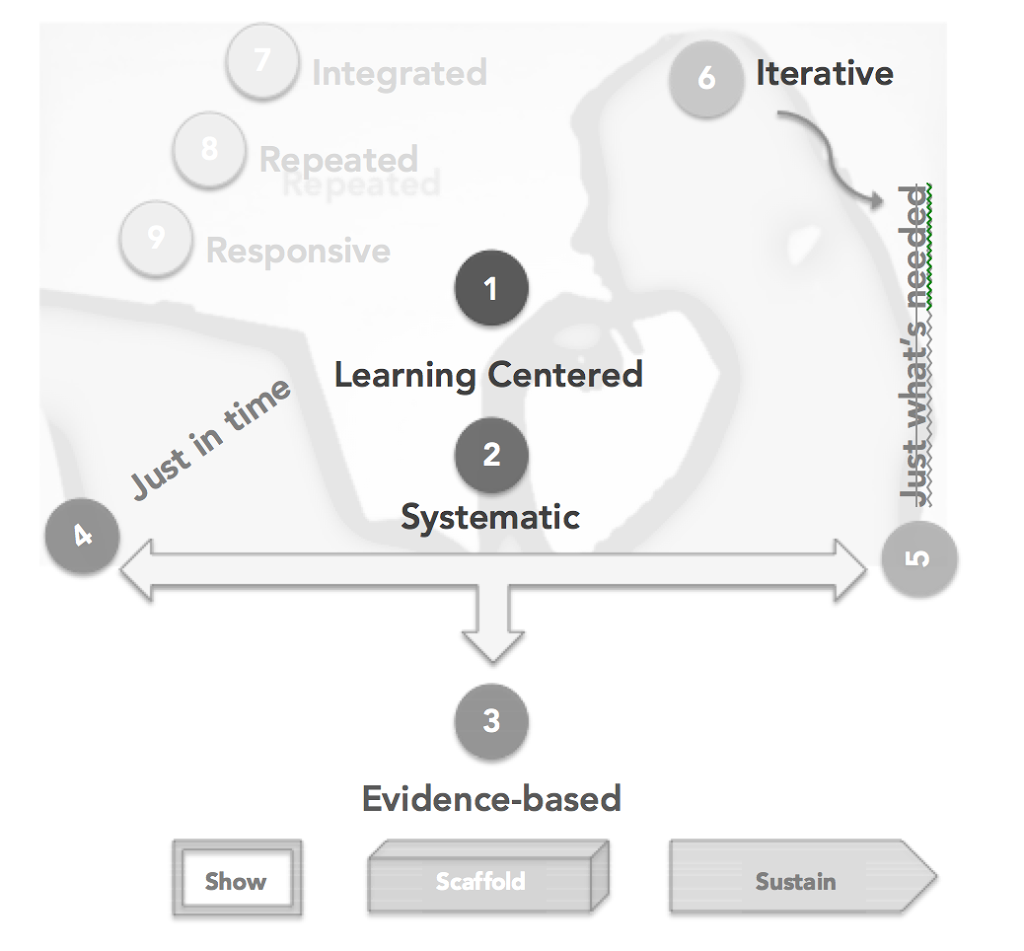In every online learning design decision, you will find elements of the above considerations.
1) All decisions should be learning centered. Note: This does not say learner-centered. Even though learners are a primary concern of all design decisions, the learner is only part of the learning equation. You are also working with instructors, subject-matter experts, content and resources as central variables as well. So, the imperative is to stay focused on the desired learning outcome.
GROAN
Yes, I hear the collective reaction to the tiresome drumbeat of the instructional designer about learning outcomes. But don’t think of them as that bulleted list of objectives with verbs from Bloom’s taxonomy. Think of them as something to hold on to whenever you are faced with a variety of choices, tools, ideas and possibilities. You can always grab one anchor- what is the desired learning outcome? And how do we get the learners there?
2) The process of instructional design should be systematic. Step 1, Step 2, Step 3, done- right? ADDIE and we’re outta here. Well, not quite so easily. But having a clear sense of method and a plan can keep your progress steady and ensure thorough attention to details. You can determine what this system is, based on your work style and parameters. As we’ll see in #6, the systematic approach is rarely linear, but you should have non-negotiable procedures and checks in place to keep you on track and to keep your learning design accountable to a high standard of quality.
3) Every online learning design will be evidence-based if the formula of show, scaffold and sustain is followed.
- Show learners the knowledge, skills or attitudes needed for the learning objectives;
- Scaffold their ability to practice these skills, and
- Sustain learning beyond the classroom by offering resources and encouraging reflective practice.
This formula has often been shown to be successful in educational research. Any additional experimentation with approaches to online learning should also build from existing research on evidence-based practices.
4) As much as possible, the strategy for online learning should make information available just-in-time when the learners are looking for it and ready for it. The structure of an online classroom can attend to this by keeping current resources available on opening pages. The important notion to shake loose is “I put it in the syllabus.” Even though it is useful to provide an overview of all activities at the beginning of a course, it is more strategic to repeat this information when it will be most useful to learners.
5) In line with the just-in-time approach, you can be strategic about how much information you provide when learners are looking for it. Similar to “chunking,” providing “just what’s needed” helps keep learners focused and works against overload. For example, the same information that may have originally been delivered in a long classroom lecture could be rolled out strategically in bits and pieces through asynchronous discussions.
6) The process of instructional design is not so neatly tied up in the profession’s acronym, ADDIE: analyze, design, develop, implement and evaluate, as it may seem. An initial design, even when based on careful needs and audience analysis, may fall apart in the idiosyncracies of a particular context. Or new constraints may present themselves. Instead of proceeding in a linear way, the steps of ADDIE are part of an iterative process that allows us to experiment, prototype, test, rethink, redesign and keep improving.
7) In order to meet the needs of learners, instructors, administrators and institutions in authentic learning environments, instructional designers must ensure that learning tools and activities can be easily integrated with existing practices and resources. This requires ecological thinking, working back and forth between innovative learning goals and institutional and instrumental parameters. It is also important to consider the lifestyles of learners and consider how to make the learning environment accessible and flexible for their habits.
8) Repeated messages are learned. This fact has been shown in study after study of cognition, memory and even marketing. Making sure that information and materials are placed redundantly throughout learning activities and environments will ensure not only ease of use but also increased learning.
9) Finally, every online learning decision should be responsive to the needs of users and provide the mechanisms for continued feedback loops. No learning design should be considered final as long as new users and goals are being added. By creating environments that can be customized for unique demands and automated for convenience, instructional designers can effect the right balance for usability and scalability.
Just to make it a nice round number, what would you add for #10?

